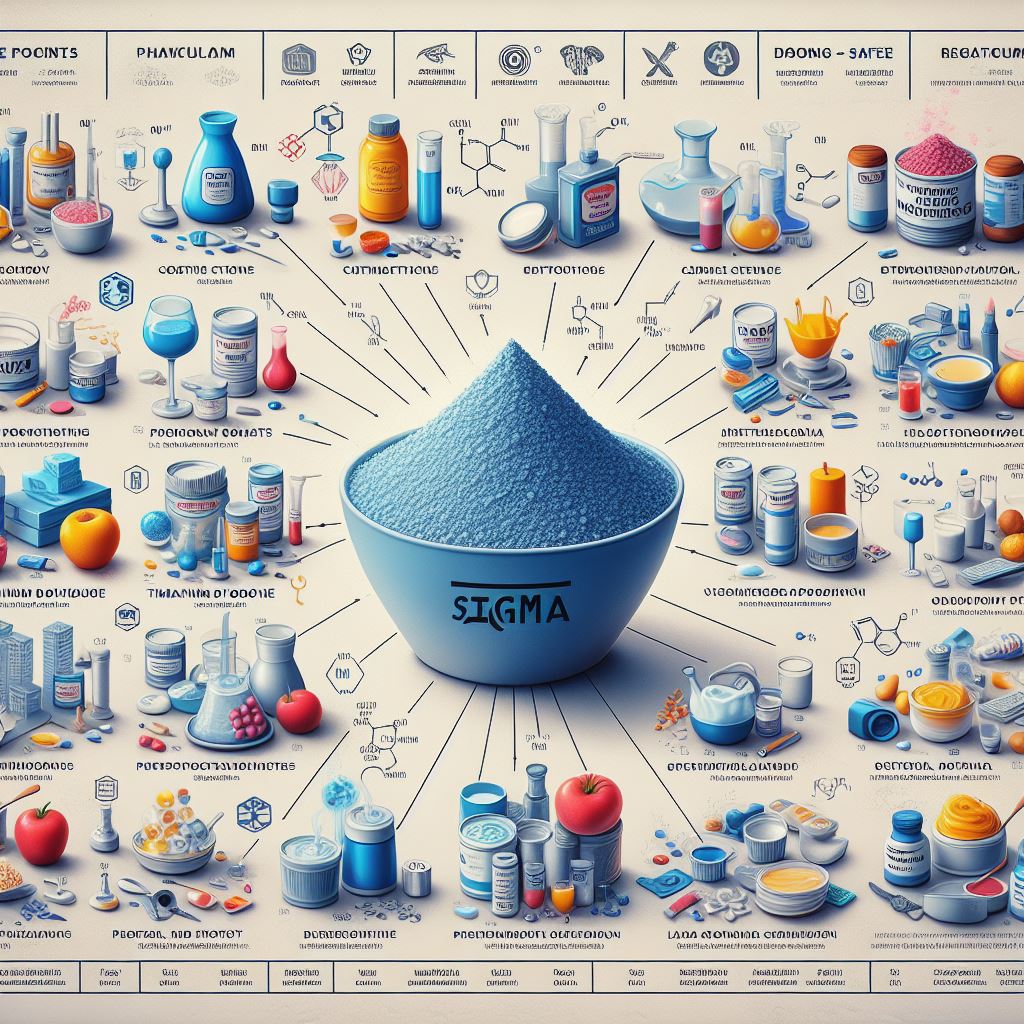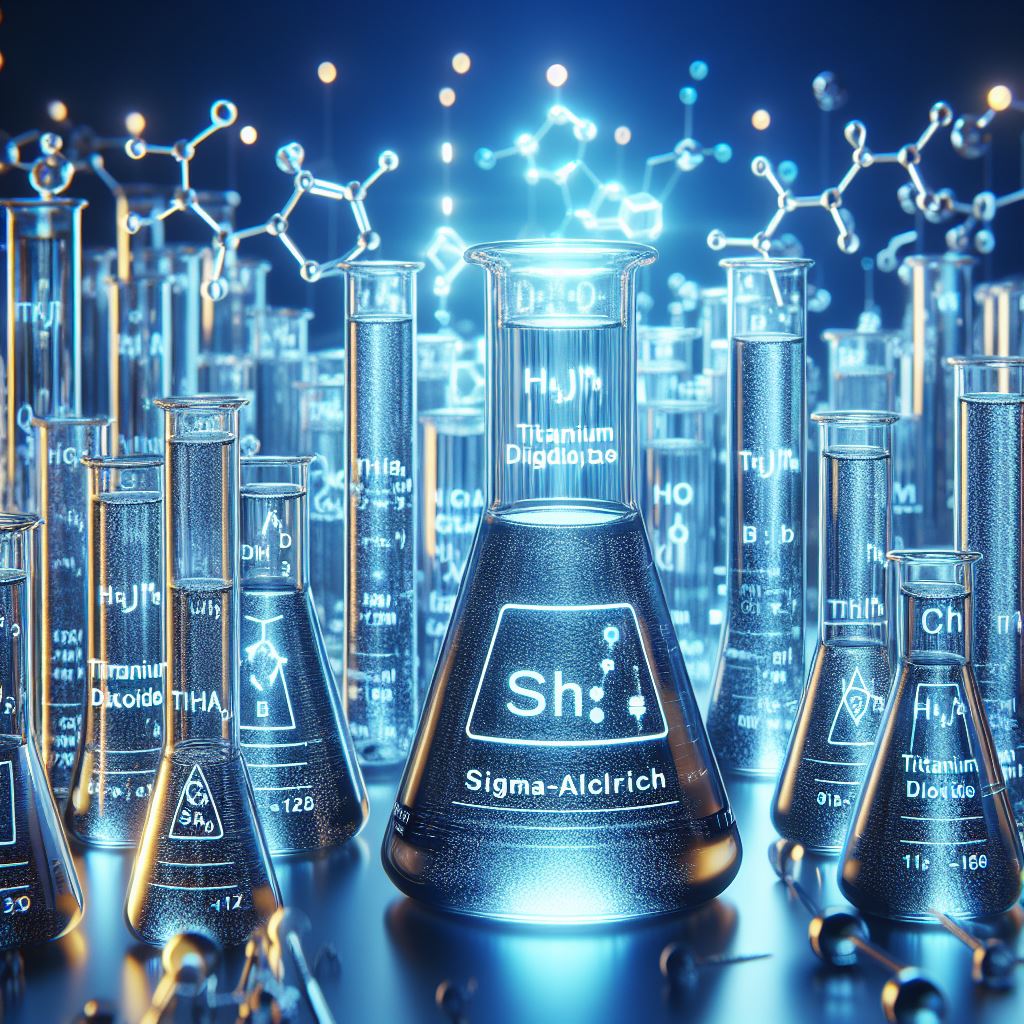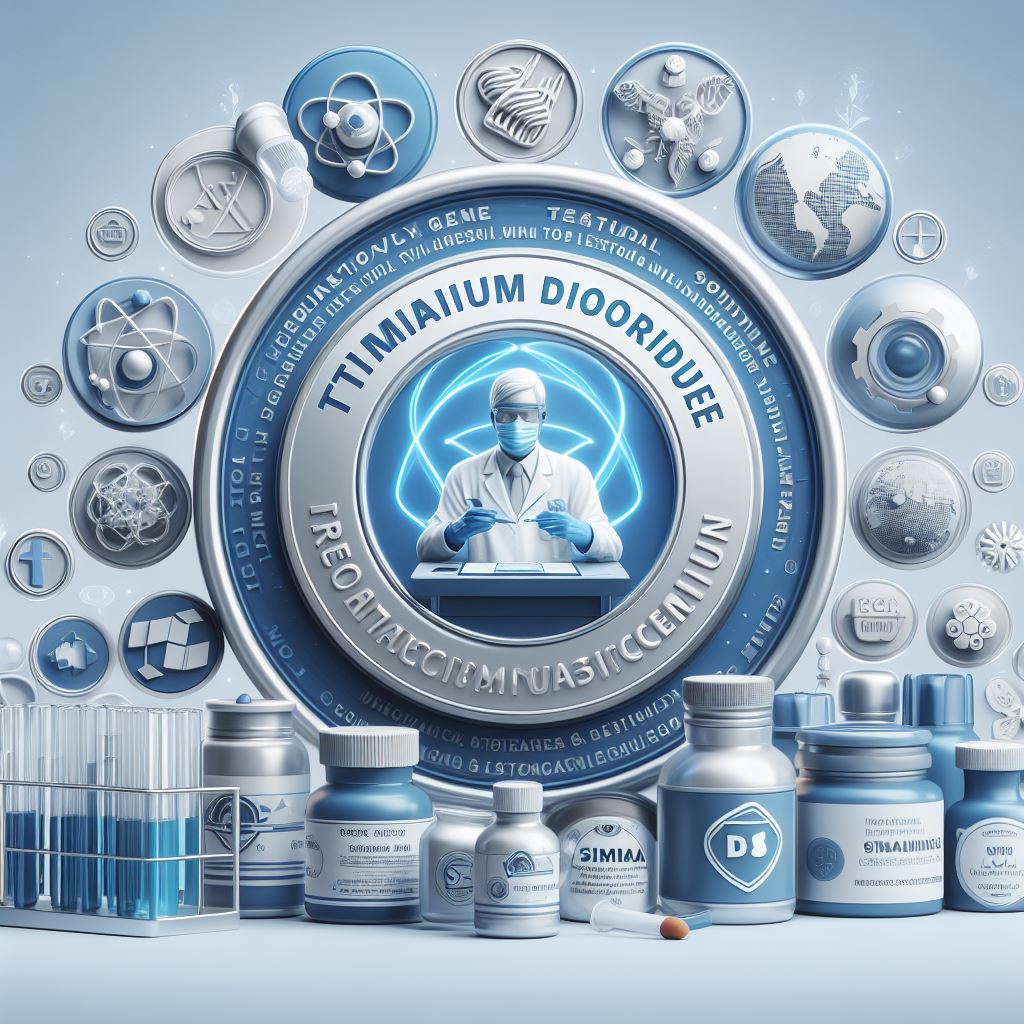Introduction to Titanium Dioxide Sigma
Titanium dioxide (TiO2), an adaptable compound, stands firm on a significant footing in different organizations inferable from its charm of solitary engineered and material highlights. Inside the field of titanium dioxide, sigma improvement arises as a significant variation, a commitment of explicit characteristics that track down utilizes across different areas.
Chemical Properties and Structure of Titanium Dioxide Sigma
Chemical Composition:
- Titanium dioxide sigma has a place with the posterity of progress ingot oxides, by and large, integrating titanium and oxygen.
- The manufactured rule for titanium dioxide sigma is TiO2.
Crystal Structure:
- Titanium dioxide exists in different transparent forms, accompanying two together most prevailing being rutile and anatase.
- The sigma aspect shows a specific transparent building inside the more extensive classification of titanium dioxide, giving unique attributes to the material.
Physical Properties:
- Titanium dioxide sigma is prestigious for engaging ridiculous refractive documents, making it a specific assortment for irregular purposes.
- It shows exceptional strength and fights to stain, providing allure and solidness in different circumstances.
Industrial Applications of Titanium Dioxide Sigma
Paints and Coatings:
- Titanium dioxide sigma fills in as a remarkable shiny variety in the paint and covering fabricating, giving shadiness and splendor to the things delivered.
- Its smart elements decorate the viability of monitoring coatings by demonstrating UV beams.
Plastics and Polymers:
- The polymer manufacturing widely promotes titanium dioxide sigma as a strengthening power in assets, reinforcing the mechanical features of the definitive merchandise.
- It imparts cloudiness and UV fighting to flexible materials.
Photocatalysis:
- Titanium dioxide sigma’s photocatalytic possessions manage an essential component in referring to practices or policies that do not negatively affect the environment.
- It may work in self-cleansing surfaces and air purification arrangements, controlling the capacity of light to decay basic contaminants.
Cosmetics and Sunscreens:
- Due to its allure non-toxic character and extreme refractive index, titanium dioxide sigma is a low piece in cosmetics, providing sunblock and enlivening belongings.
- It ensures protection against harmful UV radiation in sunscreens.
Ceramics and Glass:
- In the ceramics and glass industry, titanium dioxide sigma acts as a flux, improving the melting behavior and enhancing the optical properties of the final products.
Importance of Titanium Dioxide Sigma in Various Industries

Enhanced Performance:
- The sigma phase’s specific crystal structure enhances the performance of titanium dioxide in various applications, making it a preferred choice in industries where high performance is critical.
Versatility:
- Its versatility is evident in its ability to function as a pigment, UV blocker, reinforcing agent, and photocatalyst, catering to the diverse needs of different sectors.
Economic Impact:
- The widespread use of titanium dioxide sigma contributes significantly to the economy, with its applications spanning from construction to consumer goods.
Manufacturing Process of Titanium Dioxide Sigma
The production of titanium dioxide sigma involves a series of intricate steps, each crucial in determining the final quality of the product.
Ore Extraction:
- The process begins with the extraction of titanium ore, typically in the form of ilmenite or rutile.
- Ilmenite undergoes a series of chemical treatments to convert it into titanium dioxide.
Synthesis of Titanium Dioxide:
- The extracted ore is subjected to a high-temperature chlorination process to form titanium tetrachloride (TiCl4).
- TiCl4 is then oxidized to produce titanium dioxide, which may undergo further refinement to achieve the desired crystal structure, including the sigma phase.
Particle Size Control:
- Controlling the particle size is crucial for optimizing the performance of titanium dioxide sigma.
- Advanced techniques, such as hydrothermal synthesis and sol-gel methods, are employed to achieve precise control over particle size and distribution.
Crystal Phase Selection:
- The transformation of titanium dioxide into its various crystal phases, including sigma, involves carefully controlled thermal treatments.
- These treatments dictate the crystal structure, influencing the material’s properties.
Factors Affecting the Quality of Titanium Dioxide Sigma
Raw Material Quality:
- The quality of titanium dioxide sigma is profoundly influenced by the initial ore quality, with higher purity ores leading to superior final products.
Synthesis Conditions:
- Precise control of temperature, pressure, and reaction times during synthesis is crucial for obtaining the desired crystal structure.
Particle Size Distribution:
- Uniform particle size distribution is essential for consistent performance, requiring meticulous control during the manufacturing process.
Purity Levels:
- Impurities in the final product can significantly impact its performance, emphasizing the importance of maintaining high purity levels.
Crystal Structure Control:
- The ability to control the crystal structure, including the sigma phase, is a critical factor in ensuring the desired properties of the titanium dioxide.
Comparison of Different Grades of Titanium Dioxide Sigma

Rutile vs. Anatase:
- Titanium dioxide exists in two primary crystal phases, rutile, and anatase, each with its distinct properties.
- Rutile is known for its higher refractive index and chemical stability, making it suitable for applications requiring durability.
- Anatase, on the other hand, exhibits higher photocatalytic activity, finding applications in environmental and energy-related industries.
Sigma Phase vs. Other Forms:
- The sigma phase, with its specific crystal structure, offers a balance between the characteristics of rutile and anatase.
- It combines the high refractive index of rutile with the enhanced photocatalytic activity of anatase, making it a versatile and valuable variant.
Environmental Impact and Safety Considerations of Titanium Dioxide Sigma
Environmental Concerns:
- The environmental impact of TiO2 sigma is primarily associated with its production processes, which may involve the use of energy-intensive methods.
- The disposal of waste generated during production is another environmental consideration.
Safety Considerations:
- Titanium dioxide sigma is generally considered safe for use in consumer products like cosmetics and food items.
- However, concerns arise when dealing with fine particles, as inhalation of these particles may pose respiratory risks in certain industrial settings.
Regulatory Compliance:
- Regulatory standards, such as those set by the U.S. Food and Drug Administration (FDA) and the European Food Safety Authority (EFSA), ensure the safe use of titanium dioxide in food and cosmetic products.
Emerging Trends and Advancements in Titanium Dioxide Sigma Research
Nanostructured Titanium Dioxide:
- Research is ongoing to explore nanostructured forms of titanium dioxide, aiming to enhance its catalytic and optical properties.
- These nanostructures show promise in areas such as solar cells and sensors.
Photocatalytic Applications:
- Advancements in harnessing the photocatalytic properties of TiO2 sigma for environmental remediation and energy conversion are gaining attention.
- Researchers are exploring innovative ways to optimize its performance in photocatalysis.
Surface Modification Techniques:
- Techniques to modify the surface properties of TiO2 sigma are under investigation, aiming to tailor its interactions with other materials and improve its suitability for specific applications.
Case Studies or Examples Showcasing the Use of Titanium Dioxide Sigma
1. Self-Cleaning Coatings:
- Titanium dioxide sigma is utilized in the development of self-cleaning coatings for architectural surfaces.
- The photocatalytic activity of titanium dioxide helps break down organic pollutants, keeping surfaces cleaner for longer periods.
2. UV-Blocking Textiles:
- Textile industries incorporate TiO2 sigma into fabrics to enhance UV-blocking properties.
- This application ensures that clothing provides an added layer of protection against harmful UV rays.
3. Photovoltaic Cells:
- In solar energy applications, TiO2 sigma is explored for its potential to improve the efficiency of dye-sensitized solar cells (DSSCs).
- The material’s unique properties contribute to the stability and performance of these cells.
Key Differences Between Rutile and Anatase Forms of Titanium Dioxide
1. Refractive Index:
- Rutile has a higher refractive index compared to anatase, making it more suitable for applications requiring increased opacity and brightness.
2. Photocatalytic Activity:
- Anatase exhibits higher photocatalytic activity, making it advantageous in environmental applications such as air purification and water treatment.
3. Stability:
- Rutile is known for its stability, making it resistant to discoloration and degradation over time.
- Anatase may undergo phase transformations under certain conditions, affecting its stability.
Regulatory Standards and Certifications Related to TiO2 Sigma

1. FDA Approval:
- The U.S. FDA regulates the use of titanium dioxide in food and cosmetics to ensure its safety.
- TiO2 sigma must meet specific purity criteria to be approved for use in consumable products.
2. European REACH Regulation:
- The Registration, Evaluation, Authorization, and Restriction of Chemicals (REACH) regulation in Europe sets standards for the safe use of chemicals, including TiO2 sigma.
3. ISO Standards:
- International Organization for Standardization (ISO) standards, such as ISO 591-1 for titanium dioxide pigments, provide guidelines for quality and classification.
Challenges and Solutions in the Production and Handling of TiO2 Sigma
Challenges:
- Energy-intensive production processes pose environmental challenges.
- Ensuring uniform particle size distribution and crystal structure control can be technically demanding.
Solutions:
- Research focuses on developing more sustainable production methods with lower environmental impact.
- Advanced manufacturing techniques, such as hydrothermal synthesis, contribute to improved control over particle size and crystal structure.
Health Effects and Toxicity Considerations of TiO2 Sigma
Health Impact:
- TiO2 sigma is generally considered safe for use in consumer products when meeting regulatory standards.
- Inhalation of fine particles in certain industrial settings may pose respiratory risks, necessitating proper safety measures.
Toxicity Considerations:
- Extensive research has been conducted on the toxicity of titanium dioxide nanoparticles.
- While acute toxicity is low, chronic exposure studies are ongoing to understand potential long-term effects.
Economic Impact and Market Trends of TiO2 Sigma
Economic Contribution:
- The titanium dioxide industry significantly contributes to the global economy through its widespread applications.
- Demand in sectors like paints, plastics, and cosmetics directly influences market trends.
Market Trends:
- Growing awareness of environmental concerns is driving the demand for eco-friendly and sustainable titanium dioxide products.
- Market players are investing in research and development to introduce innovative formulations and applications.
Innovations and Developments in the Synthesis and Modification of TiO2 Sigma
1. Nanostructured Forms:
- The synthesis of nanostructured TiO2 sigma is an innovative approach to enhancing its properties, particularly in catalysis and optics.
2. Surface Modification:
- Researchers are exploring surface modification techniques to tailor the interactions of TiO2 sigma with other materials, expanding its application possibilities.
Potential Future Applications and Research Directions for TiO2 Sigma
1. Energy Storage:
- Ongoing research explores the potential use of TiO2 sigma in energy storage devices, such as batteries and supercapacitors.
2. Biomedical Applications:
- The biocompatibility of TiO2 sigma is under investigation for potential use in medical implants and drug delivery systems.
3. Advanced Photocatalysis:
- Future research may uncover novel photocatalytic applications, including more efficient air and water purification systems.






Pingback: Titanium Dioxide For Cosmetics: Discover The Beautiful Power - Safe Climber Overseas Pvt. Ltd.